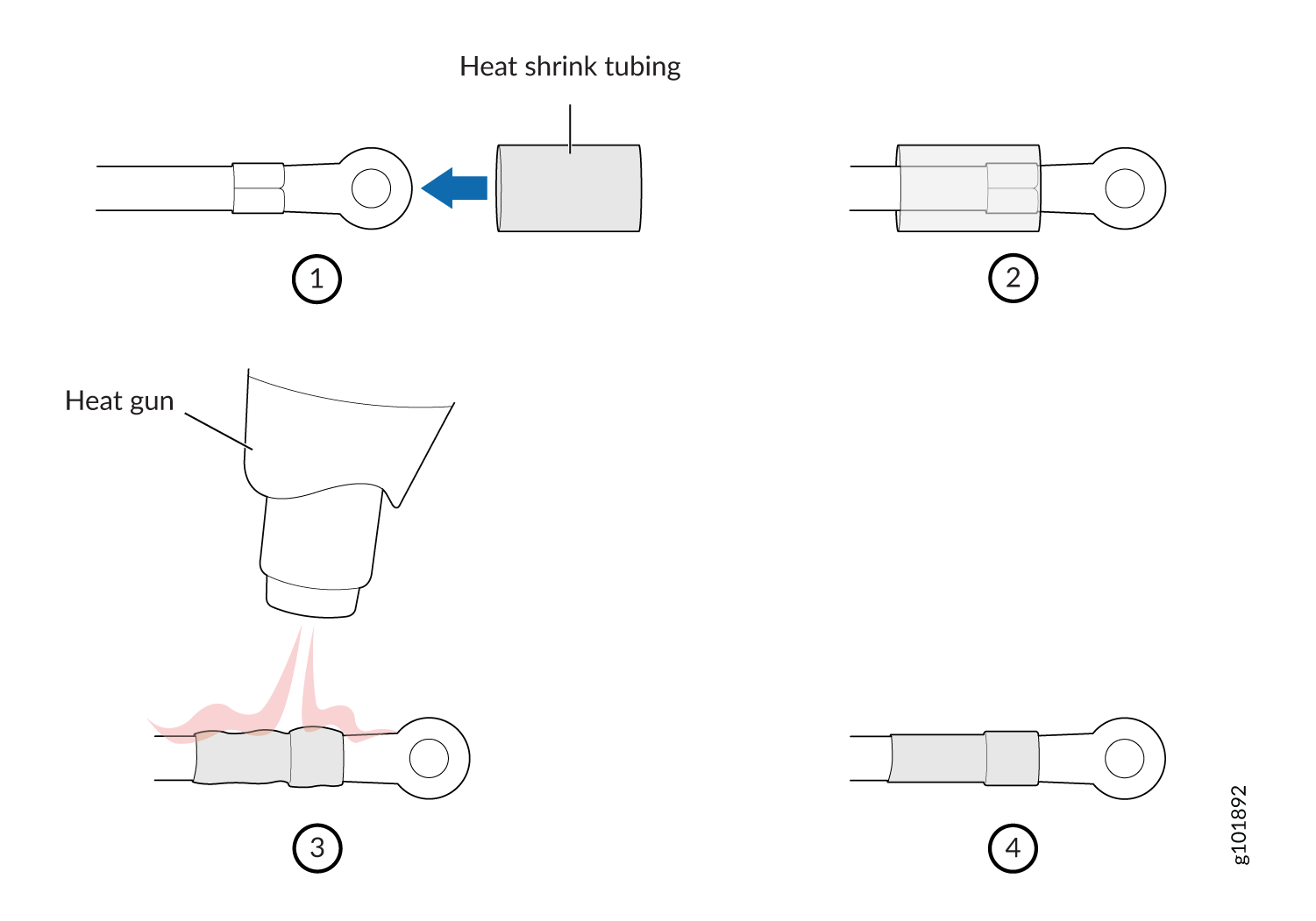Connecting DC Power to a QFX5110
Before you begin connecting DC power to the switch:
Ensure that you have taken the necessary precautions to prevent electrostatic discharge (ESD) damage (see Prevention of Electrostatic Discharge Damage).
Ensure that you have connected the switch chassis to earth ground.
CAUTION:Before you connect power to the switch, a licensed electrician must attach a cable lug to the grounding and power cables that you supply. A cable with an incorrectly attached lug can damage the switch (for example, by causing a short circuit).
To meet safety and electromagnetic interference (EMI) requirements and to ensure proper operation, you must connect the chassis to earth ground before you connect it to power. For installations that require a separate grounding conductor to the chassis, use the protective earthing terminal on the switch chassis to connect to the earth ground. For instructions on connecting earth ground, see Connect the QFX5110 to Earth Ground.
On DC systems, you can also ground the chassis using the DC protective earthing terminal on the DC power supply as an alternate method. This method is useful if you are unable to access the chassis ground point by using the two-holed grounding lug, see Alternate Method to Ground QFX5110-48S-DC and QFX5110-32Q-DC Systems.
Install the power supply in the chassis. For instructions on installing a power supply in a QFX5110, see Installing a Power Supply in a QFX5110.
Ensure that you have the following parts and tools available:
DC power source cables (14–16 AWG) with ring lug (Molex 190700069 or equivalent) (not provided)
Phillips (+) screwdriver, number 2 (not provided)
Multimeter (not provided)
The QFX5110 is shipped from the factory with two 650 W power supplies. Each power supply is a hot-removable and hot-insertable field-replaceable unit (FRU) when the second power supply is installed and running. You can install replacement power supplies in the two slots next to the fan modules without powering off the switch or disrupting the switching function.
A DC-powered QFX5110 is intended for installation only in a restricted access location.
The battery returns of the DC power supply must be connected as an isolated DC return (DC-I).
To connect DC power to a QFX5110:



